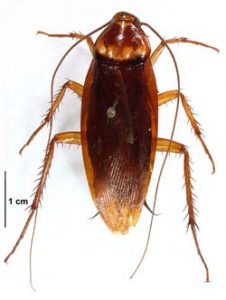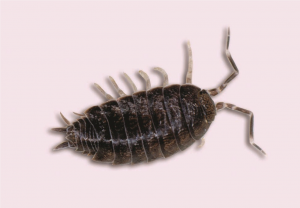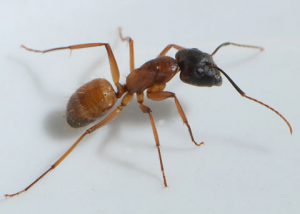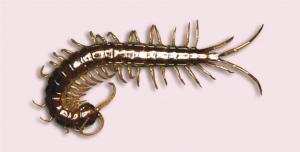Until recently, rainfall has been plentiful. That’s great for the water table and preparing plants to wake up for spring. But, insects are also stirring. Bugs are affected by rain in many ways. When water is plentiful, they can grow faster, reproduce sooner and travel farther. Combine that with the fact that the insects’ homes are being flooded out and their normal food sources are displaced; and where do you think they are headed? Yes, into your house. Four bugs you can anticipate seeing after rain events include cockroaches, sowbugs, ants and centipedes.
Roaches tend to live in places that flood easily, especially this time of year. To survive the cold nights, cockroaches need to find a warm place to rest. Typically those places would be drains, pipes, sewers, along foundations and in crawl spaces. But, when it rains, these locations are often flooded, forcing cockroaches to scurry for their lives to avoid drowning. A crack in weather stripping or window caulking makes a quick hideaway. Once inside, they may decide to stay. Frequent rainy days create the lingering humidity that makes all kinds of places more livable for roaches.
Sowbugs and his cousin, the pillbug, are very small, pill-shaped pests with multiple legs and a series of shell-like plates. Often referred to as roly-polys, these creatures are actually a form of land
crustacean related to lobsters, crabs, and crayfish. The sowbug’s breathing tubes require moisture to function properly, so they must stay near water. Typically this fact restricts the sowbug to living in moist soil or sand. Ending up inside a building is normally a terminal condition for them. However, due to the moisture left in the air after a rain event, sowbugs that seek refuge inside are able to survive for longer periods of time. Given the opportunity, sowbugs will reproduce indoors. If they have decaying organic material to feed on, they may stick around even longer; having time to create a multi-generational infestation.
Ants are never too far away. They usually build their colonies in the soil near convenient sources of food and shelter. Being in the ground puts ant colonies at great risk for flooding out, even with short periods of rainfall. When this happens, ants are forces to find higher, drier ground quickly or risk being washed away. What better place than a house? Once inside, the ants get back to work looking for food and building the colony. Expect to see ants around kitchen sinks, on window sills and working their way into cupboards and pantry areas during and after a heavy rain. Unfortunately, if they find all the elements needed to make their home, the ants will be very reluctant to go back outside.
Like the other pests mentioned, centipedes are attracted to humid environments. But, centipedes are active hunting carnivores. They like to feed on roaches, sowbugs and ants. So, they follow them into the house, a well-stocked hunting ground. Centipedes typically only hunt late at night, but in dark areas they can hunt day and night. Finding centipedes if most likely an indication of another pest infestation.
These rain-displaced pests may need some help from a pest control product and/or operator to be discouraged from staying inside. We need the rain. But, keep a close watch for the unwanted visitors.
- What is Titi? - March 22, 2024
- Taking Care of the Plants Inside - February 8, 2024
- Celebrate Trees in January - January 4, 2024




